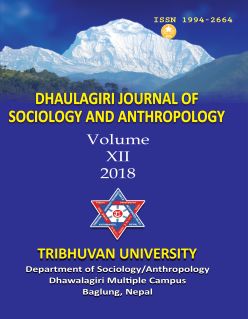Regional Variation in Food Security in Nepal
DOI:
https://doi.org/10.3126/dsaj.v12i0.22174Keywords:
access, food security, region, Nepal, South AsiaAbstract
Food security is a global challenge. This paper examines the regional variation in household food security in Nepal. Specifically, I examine the variation in household level food security with particular reference to newly formed provinces constructed as per the new constitution (2015) of the country, three ecological regions and rural-urban locations of households. I use the nationally representative data from 2011 Nepal Demographic Health Survey to investigate the issue. Using both descriptive as well as multivariate analysis, evidences show that there is regional variation in overall food security in Nepal. Findings show that food security is a problem of rural households. Moreover, food security status of households also significantly varied by province. Households living in Karnali and Far-west provinces (province 6 and 7) located in the western part of Nepal are more food insecure as compared to those living in other provinces. Food security status of households also varied by domains of food security. While anxiety about food supply was an issue for households in the mountains and the hills, food security in terms of quality was equally important in all three ecological regions. However, interestingly, quantity of intake was not a major issue in all the three ecological regions. All three domains were important for households that live in rural areas as well as those living in provinces other than those in Karnali and Far-west provinces. These findings provide a macro level snap shot of food security situation of Nepal and are deemed important for the newly formed federal and provincial governments for food policy framing. Further investigation at the micro-level is necessary for more concrete policies.




